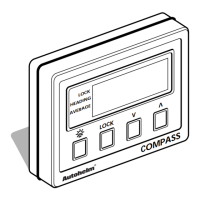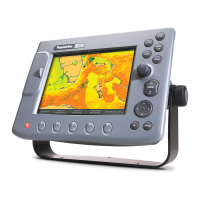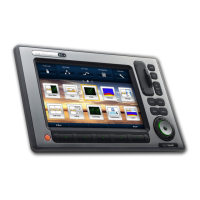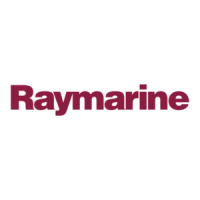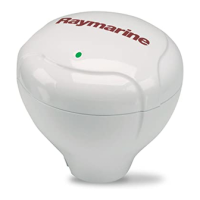42 C-Series Displays Installation Manual
Connecting equipment to the NMEA port
Testing instrument data
To ensure that your system is receiving instrument data, you should check the
following:
From SeaTalk or SeaTalk
2
Open the digital instrument application and ensure all relevant data is displayed. If you
are not receiving data, check cable connections.
From third party devices on NMEA 0183
Check that appropriate NMEA sentences are being sent from the third party device and
on the C-Series Display. Open the digital instrument application and ensure all relevant
data is displayed.
Running AIS
In order to run AIS, you will need:
• A receive only AIS unit or a full transponder.
A receiver will allow you to receive data about other vessels in your area but will
not allow other vessels to ‘see’ you. A full transponder transmits and receives AIS
data and therefore allows you to receive data about other vessels and for other
AIS equipped vessels to see and receive information about your vessel. This could
include position, course, speed and rate of turn data.
• A VHF antenna (part of an AIS system).
•A GPS.
• A Compass - although not essential, this will enhance performance.
When the AIS unit is connected to the C-Series display, the status of the unit is
indicated by an AIS icon in the transducer data box.
You will now need to specify the 38,400 baud rate for the NMEA port that
communicates with the AIS transceivers and receivers (see the table at the top of this
page).
Connected equipment to
NMEA port Setting Additional information
General NMEA instruments NMEA 4800 Default setting
Navtex receiver Navtex 4800
Navtex 9600
Please refer to your Navtex receiver
manual for details of the appropriate
setting.
AIS receiver AIS 38400
87020-3.book Page 42 Tuesday, March 7, 2006 11:02 AM

